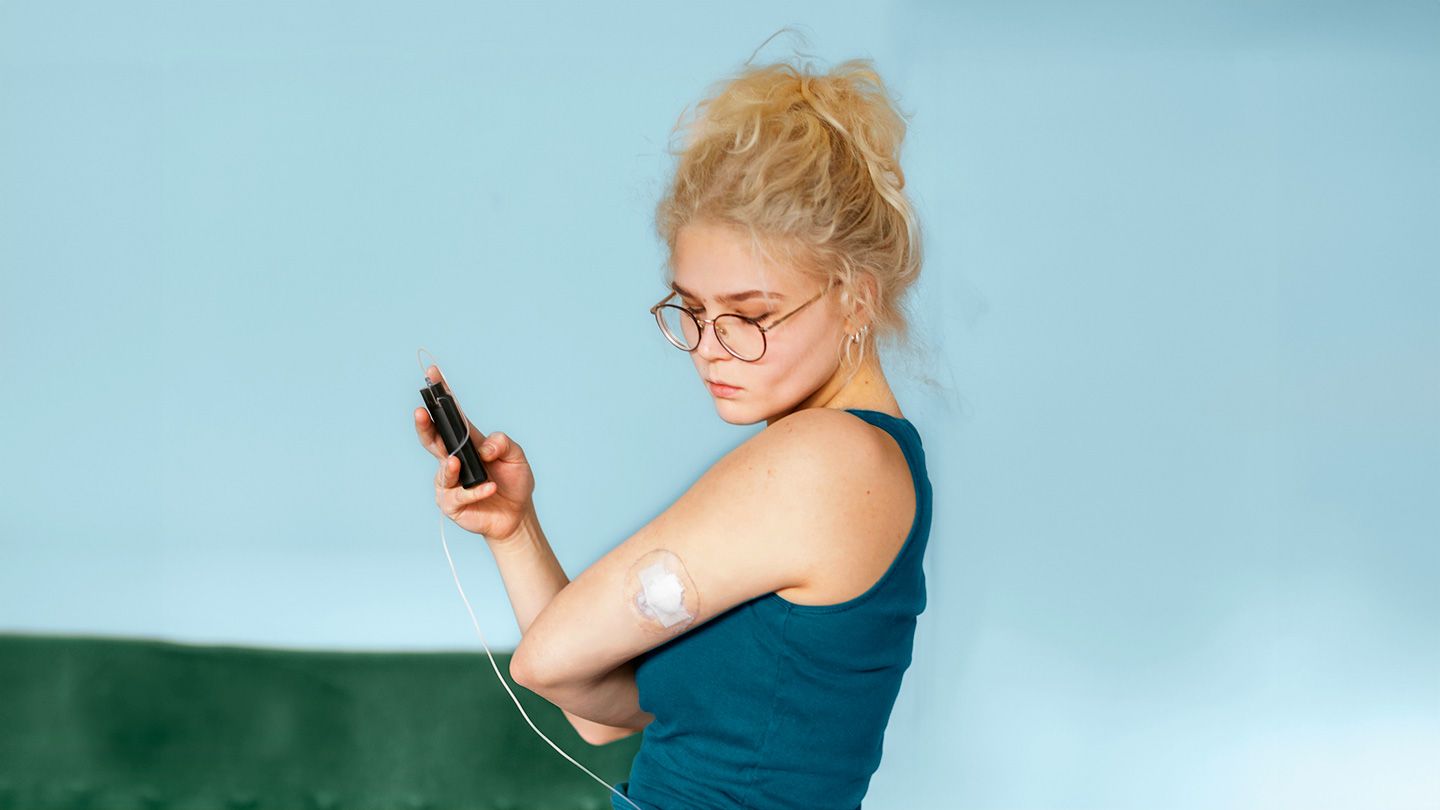“Insulin pumps can bring a tremendous amount of relief to the constant work of managing insulin for people with diabetes of any age,” explains Jennifer C. Smith, RD, CDCES, a virtual diabetes coach at Integrated Diabetes Services.
An insulin pump delivers insulin in two ways: via a basal rate and bolus doses. A basal rate is a steady flow throughout the day and night, programmed based on units per hour and customizable for any hour of the day. A bolus is a dose of rapid-acting insulin to prevent the blood sugar spikes caused by food or to correct a high blood sugar reading.
The pump itself, which can clip to your clothing or be placed in a pocket, contains a reservoir of insulin and connects to an infusion set that is attached to the body. While they vary in style, infusion sets feature a thin, flexible tube with a tiny cannula inserted under the skin, typically on the abdomen, thigh, or side of your upper arm. Some tubeless pumps, like the Omnipod or Mobi, can attach directly to the skin.
Infusion sets last two to three days and must be changed diligently to prevent irritation and infections.
Insulin pumps are designed to deliver rapid-acting insulin only. By continuously administering tiny doses, the pump can mimic the natural continuous background insulin secretion of the pancreas and replace injections of long-acting basal insulin. While your healthcare team will work with you to establish initial doses, it’s critical to communicate as much as needed to further fine-tune these doses based on your glucose levels.
“If you’re experiencing frequent highs or frequent lows, [it’s possible that] one of your settings isn’t accurate,” says Smith. “Small changes to your basal rates or meal ratios can make a big difference.”
Smith adds that children and teens will also experience ongoing changes in their insulin needs as they grow, making it imperative to review glucose data with your child’s healthcare team to adjust their settings gradually.
While insulin pumps can eliminate the daily work of injections, they still require daily attention and management. Carb counting, blood glucose monitoring, and ongoing education are critical to managing diabetes effectively with an insulin pump.
Read the full article here




